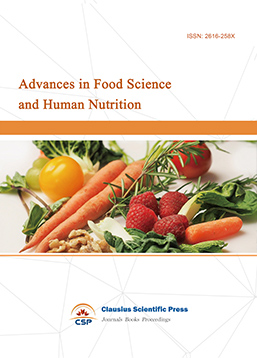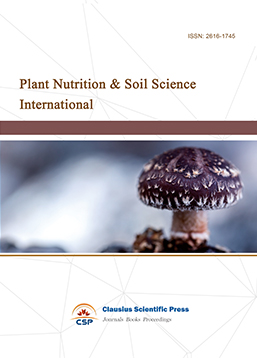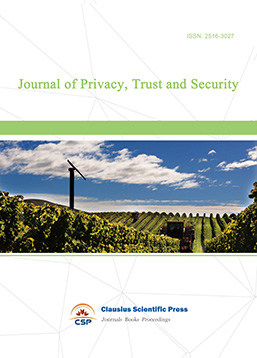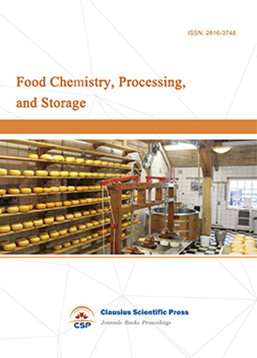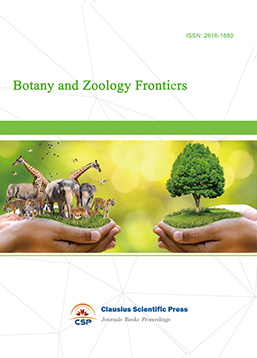Study on Prediction Method of Grain Pollutants Based on LSTM and Stochastic Forest
DOI: 10.23977/jmcs.2022.010105 | Downloads: 13 | Views: 1888
Author(s)
Li Wang 1, Lang Zheng 1, Xuebo Jin 1, Xiaoyi Wang 1,2, Jiabin Yu 1, Yuting Bai 1
Affiliation(s)
1 School of Artificial Intelligence, Beijing Technology and Business University, Beijing, China
2 Beijing Institute of Fashion Technology, Beijing, China
Corresponding Author
Li WangABSTRACT
Crops such as wheat and peanuts are the main food crops in the world. Due to the complex process of pollutant changes and discrete data in the process of food supply chain processing, accurate prediction is very important for food quality. Most of the existing methods are applicable to continuous systems, and the prediction accuracy of discrete systems such as grain pollutants is not high. To solve this problem, this paper proposes a modeling method based on Long Short-Term Memory (LSTM) network and stochastic forest algorithm. The research contents of higher precision prediction for the discrete system of grain pollutants mainly include: 1) using Random Forest algorithm to predict the pollutants in the grain supply chain; 2) The LSTM Network algorithm is used for the same prediction, and the prediction results of the two methods are compared. Taking the peanut oil supply chain data as an example, the results show that the Random Forest algorithm is better than the LSTM Network in comprehensive prediction, and the prediction accuracy of the test set reaches 99.7%. It can realize the accurate prediction of the pollutants in the grain supply chain.
KEYWORDS
Random forest, long short-term memory, fungal contamination, foodstuffCITE THIS PAPER
Li Wang, Lang Zheng, Xuebo Jin, Xiaoyi Wang, Jiabin Yu, Yuting Bai, Study on Prediction Method of Grain Pollutants Based on LSTM and Stochastic Forest. Journal of Modern Crop Science (2022) Vol. 1: 38-49. DOI: http://dx.doi.org/10.23977/jmcs.2022.010105.
REFERENCES
[1] Purushtham S, Shetty H. Storage fungal invasion and deterioration of nutritional quality of rice. Journal of Mycol Plant Pathol, 2010, 40 (4): 581-585.
[2] Piotr M, Yann L. Statistical Machine Learning and Dissolved Gas Analysis: A Review. IEEE Transactions on Image Processing, 2017, 28: 2-18.
[3] Wang Hongxing, Tao Zhengguo. The harm of mycotoxins in feed and its prevention measures. Veterinary Medicine and Feed Additives, 2018, 5 (3): 19-20.
[4] Lan Xueping, Chen Jinying, Jiang Youjun, et al. Research of Building Grain Storage Quality Prediction Model Based on BP Neural Network Algorithm. Chinese Journal of Cereals and Oils, 2020, 35 (11): 147-151.
[5] Manstretta V, Rossi V. Comparison of three modelling approaches for predicting deoxynivalenol contamination in winter wheat. Toxins (Basel), 2018, 10 (267): 1-15.
[6] Jia Xiaoyong, Xu Chuansheng, Bai Xin. The Establishment of Least Square Method and Its Thinking Method. Journal of Northwest University (Natural Science Edition). 2006, 2006 (03): 507-511.
[7] Deng Yurui, Zhou Yong, Cong Wei, et al. Research on prediction model of grain mildew probability based on naive Bayesian algorithm. Chinese Journal of Cereals and Oils, 2019, 34 (S2): 35-38.
[8] Zheng Moli, Zhao Yanke, Yan Min, et al RDPSO-SVM based intelligent evaluation method for loss in grain post production storage. Computer and modernization, 2020, 2020 (3): 72-76.
[9] Wang Chunhui, Zhou Shenglu, Wu Shaohua, et al. Prediction of grain output in Jiangsu Province based on multiple linear regression model and grey correlation analysis. Urban geology, 2014, 2014 (04): 35-53.
[10] Peromingo B, Rodriguez A, Bernaldez V, et al. Effect of temperature and water activity on growth and aflatoxin production by Aspergillus flavus and Aspergillus parasiticus on cured meat model systems. Meat Science, 2016, 2016 (122): 76-83.
[11] Vanderfels-Klerx H, Olesen J, Madsen M, et al. Climate change increases deoxynivalenol contamination of wheat in north-western Europe. Food Additives and Contaminants Part A -Chemistry Analysis Control Exposure & Risk Assessment, 2012, 29 (10): 1593-1604.
[12] Tian K, Huang Z, Wang X, et al. Research progress on in vitro models for evaluating drug-induced neurotoxicity. Drug Evaluation Research, 2020, 43 (7): 1433-1443.
[13] Guo Yafei, Fan Chao, Yan Hongtao. Grain yield prediction based on principal component analysis and particle swarm optimization neural network jiangsu agricultural sciences, 2019, 47 (19): 241-245.
[14] Chen Dingyu, Wan Jian, Cheng Hanfeng. Prediction of China's grain output based on ARIMA model. Marketing, 2019, 2019 (13): 95-96.
[15] Ortega J, Ferrís J, Berbel O, et al. Environmental neurotoxins (IV). Tobacco, alcohol, solvents, fluoride, food additives: adverse effects on the fetal and postnatal nervous system. Preventive measures. Acta Pediatrica Espanola, 2006, 64 (10): 493-502.
[16] Tian K, Huang Z, Wang X, et al. Research progress on in vitro models for evaluating drug-induced neurotoxicity. Drug Evaluation Research, 2020, 43 (7): 1433-1438.
[17] Pan Yan. Research on Application of Decision Tree Algorithm in Curriculum Association Analysis of Higher Vocational Colleges. Modern Information Technology, 2019, 3 (2): 159-161.
[18] Yan Zhengxu, Qin Chao, Song Gang Stock price prediction based on Pearson's feature selection of stochastic forest model. Computer engineering and application, 2021, 57 (15): 286-296.
[19] Liu Min, Lang Rongling, Cao Yongbin. Number of trees in random forests. Computer Engineering and Application, 2015, 51 (5): 126-131.
[20] Cheng Min, Zhang Yaowen, Jiang Jiyi, et al. Rainfall prediction analysis based on time series model. Water Science and Engineering Technology, 2019, 2019 (1): 1-5.
[21] Dobbins W. BOD and oxygen relationship in streams. Journal of the Sanitary Engineering Division, 1964, 90 (3): 53-78.
[22] Chen Y, Rangarajan G, Feng J, et al. Analyzing multiple nonlinear time series with extended Granger causality. Physics Letters A, 2004, 324 (1): 26-35.
[23] Devi A, Maragatham G, Boopathi K, et al. Hourly day-ahead wind power forecasting with the EEMD-CSO-LSTM-EFG deep learning technique. Soft Computing, 2020, 24 (16): 12391-12411.
| Downloads: | 684 |
|---|---|
| Visits: | 50980 |

 Download as PDF
Download as PDF